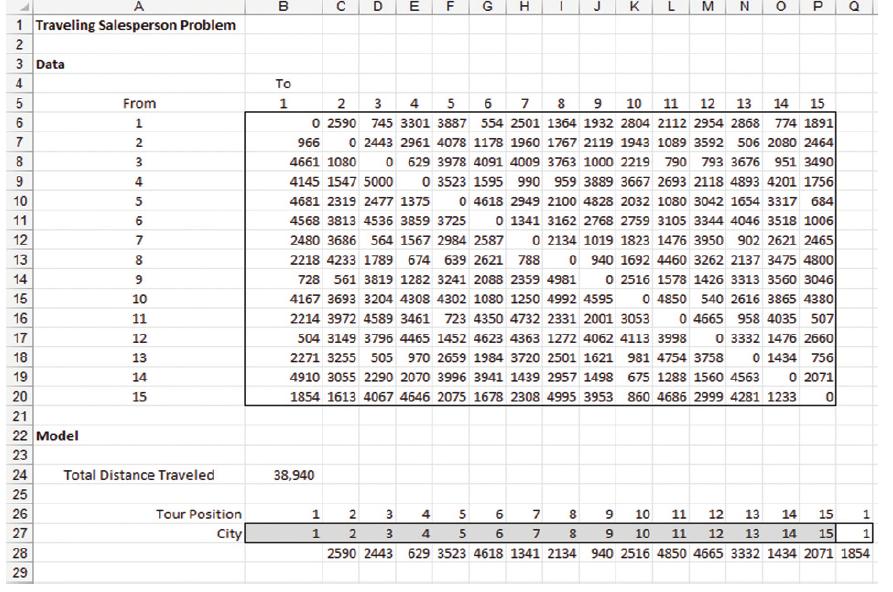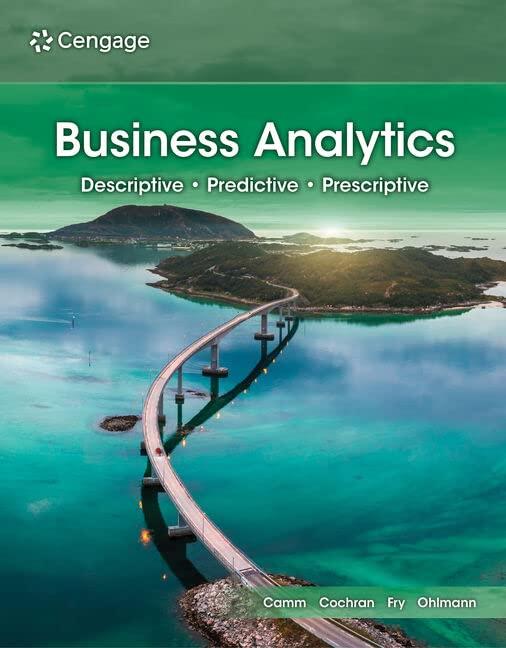A well-studied optimization problem is the traveling salesperson problem (TSP). Given travel distances between N cities, the
Question:
A well-studied optimization problem is the traveling salesperson problem (TSP). Given travel distances between N cities, the TSP problem is to construct a tour that has minimal total distance traveled.
A tour is defined as a loop that contains all N cities in which you enter and leave each city once, and return home to the city in which you began. The asymmetric traveling salesperson problem refers to the data not being symmetric, that is, the distance from city A to city B is not necessarily the same as the distance from city B to city A. The TSP problem is difficult to solve to optimality because integer-programming-
based methods result in subtours forming rather than one large tour.
However, a heuristic approach using the INDEX function in Excel with the Evolutionary method and a special constraint called “All Different” can yield good solutions. The “All Different” constraint ensures that the decision variables each take on a different integer value.
The file atsp contains a matrix with the distances in miles between 15 cities and a model for solving the associated TSP:
The current solution in row 27 is to simply travel the cities in the order they are numbered. As shown in cell B24, the total distance traveled for this tour is 38,940 miles. For any proposed tour (ordering of the cities in row 27, we use the INDEX function to get the distance between pairs of cities in the tour (note in the following figure we have hidden columns D through P).
The INDEX function works as follows: 5INDEX($B$6:$P$20,B27,C27) finds the element in the matrix defined by B6:P20 in the row defined by the value in cell B27 and the column defined by the value cell C27. For example, in cell C28 the value returned is the element in the matrix in the first row and the second column, which is 2590. In cell Q27, the formula 5B27 forces the tour to end where it started and the formula in cell B24, 5SUM(C28:Q28) adds up the distances to get the total tour length.
a. Use the Evolutionary method to solve this problem. Minimize B24 with Changing Variable Cells B27:P27, and an All Different constraint for cells B27:P27 (add a constraint and select “dif” as the constraint type). Keep the default options, but set the Random Seed to 15.
Give the best tour found and its total distance.
b. What percentage improvement is gained by the solution found versus the original tour which followed the cities in order of their number?
Step by Step Answer:

Business Analytics
ISBN: 9780357902219
5th Edition
Authors: Jeffrey D. Camm, James J. Cochran, Michael J. Fry, Jeffrey W. Ohlmann





